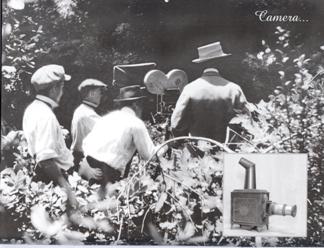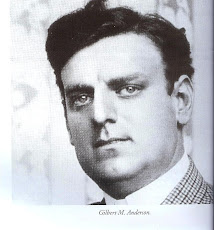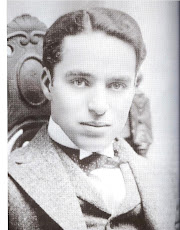.jpg)
Let's continue our studio tour. Let's begin with a little local history about Niles itself. The land where we are standing belonged once to Jose de Jesus Vallejo (c 1840's) in which he owned 17,000 acres called Ranch Arroyo de la Alameda. Later this place was known as Vallejo Mills. There is a creek here that once provided water power to grind wheat that was grown in fields close by. Orchards eventually took their place and Vallejo lost his land due to debts he owed to a man named Clark. )
.jpg)
Clark sold his land to The Spring Valley Water Company because they wanted the water rights.(Source:"Broncho Billy & the Essanay Film Company" by David Kiehn
During the late 1860's the railroad came to town. Niles Station was built by the Central Pacific and named the depot after a local attorney, Addison C. Niles. In 1871he later became a Justice of the California Supreme Court.By 1884 the Southern Pacific Railroad owned the land and a town gradually began to take form. Hotels,stables, churches and of course saloons were built. In addition barbershps, a general store, cobbler, and other businesses came to Niles Canyon (originally known as Alameda Canyon
.jpg)
It was 1912 when Gilbert Anderson (Broncho Billy) brought the Essanay Film Company to the little town of Niles (the word "Canyon" was now dropped from the town's name).>
.jpg)
The studio was originally located in Chicago, but with constant inclement winter weather and a lack of natural light,coming west was the perfect solution. California offered not only a moderate year round weather pattern, but it posessed beautiful natural scenery as well. Of course Anderson did not count on the cold foggy and rainy weather we have in Northern California, but it was certainly better than what Chicago offered. Essanay Studios initially shot several movies in southern California. Anderson decided he wanted to live in San Francisco, so it made sense to look for a location to relocate his studio near his home. Enter Niles.........
.jpg)
There really wasn't much to the place in the way of industry except a 600 acre nursery known as California Nursery and fruit orchards. Upon arrival, Anderson promptly met with the president of the local bank(Bank of Alameda County)August May, the local newspaper editor ("The Register"), and the owner of the local saloon, Billy Moore. During this meeting it was decided that an empty barn was to be Essanay's first studio, located on Second Street.
.jpg)
Anderson negotiated with the townspeople to buy land for his studio in the immediate down town area between Front and Second Streets in Niles. He tore down orchards and built bungalows and other buildings needed to make movie sets.During this time they started filming their movies, complete with cowboys, stagecoaches, and of course the local saloon was used for the bar scenes.
The locals became used to the comings and goings of the studio crews, camera men and the actors rehearsing their lines and shooting various scenes around town. The problems came when tourists and visitors would get in the way and scenes would have to be shot over and over until someone chased these unwanted "guests" out. Obviously, sets were not elaborate as they are today. They would use local buildings after asking permission of the inhabitants. Most sets were reused after being repainted or changed in some way in order to match the scene they needed for a particular day. The surrounding hills and canyon added a realistic back drop as well. Muslin cloth was draped overhead to defuse light and glare from the sun.
.jpg)
According to David Kehn's book, Anderson never used more than 2,000 feet of film to shoot his movies. Stock footage was used over again in many of his films to save time and money. This also gave him personal time for personal appearances and traveling, because he would shoot 5 films in six days.
Some actors were paid salaries of $25.00 per week, and supplemented their income by acting as movie extras which would yield them an additional $3.00 per day. Some featured character parts paid an additonal $5.00 per day. Anderson did not like to pay for script writers if he could get scripts from other sources. He searched through pulp magazines and even the Oakland Public Library according to Josephine Rector who was the head of Essanay's one person scenerio department (Source; "Broncho Billy and the Essanay Film Company" by David Kiehn).
On our next tour we will talk about more Essanay studio history,the films,and actors that have left their imprint on this special place. Until then....happy trails.
.jpg)





.jpg)

.jpg)

No comments:
Post a Comment